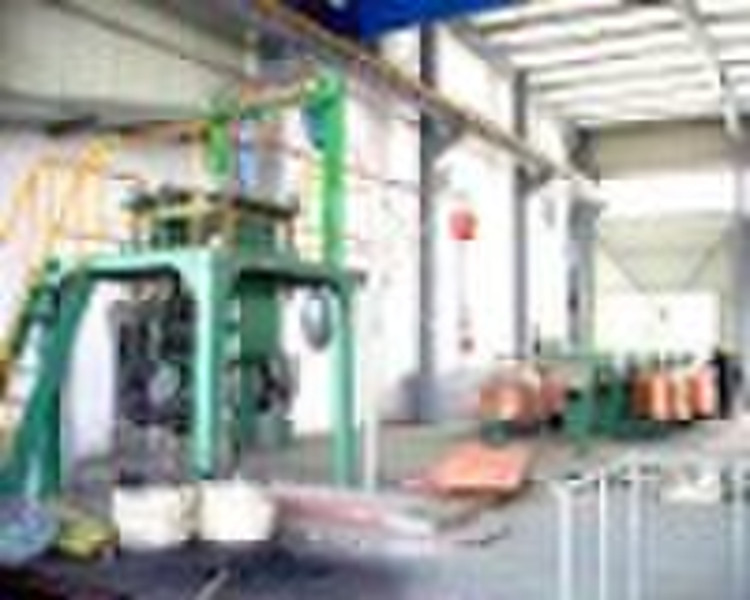Oxygen content Upward Casting Production Line for
浯溪镇, 中国

xunzhi shun
联系人姓名
基本信息
The induction furnace is a combination of melting furnace and holding furnace, which are built together. It is designed and built on the principle of Electro-magnetic Induction. When A.C. is applied to the induction coils, the alternative flux generates. The alternative flux forms a closed magnetic circuit via core, which is made by silicon steel sheet (Z10, 0.35mm cold-rolled). The alternative flux generates induced E.M.P and secondary current in the channel. The current generated is converted into thermal energy via the resistance of metal in the channel, which finally melts the channel. The induction furnace consists of top cover, upper body, support, inductor, hydraulic system, operation panel, main contactors and relays, etc. The melting unit and holding unit share one furnace body together. The isolation wall is built in the middle of melting and holding unit. There is a pass-way underneath to connect both units, which allows the molten metal to flow freely to holding unit from melting unit. Both units equip with line-frequency inductor respectively. The furnace body is built by refractory bricks and the ramming materials. The inductor consists of the shell, channel, core, water-cooler and refractory materials. The core is made by Z11, 0.35mm cold-rolled silicon steel sheet. The induction coils are made by rectangular copper tube, wrapped by mica tape and fiberglass. The water-cooler is made by 3mm thick 1Cr18Ni9Ti stainless steel. The casting machine consists of AC servo motor and pulling rollers. Its operation is achieved by servo motor. Its speed is adjustable by presetting the parameter of dwell-pull-back movement via touch-screen and PLC. The pinch roller groups are equipped on the panel, driven by a main drive shaft. Each pinch roller group can be working individually. The copper rod is pulled out intermittently by V-type rollers. The power generated by servo motor, via reducer, is transferred to the main drive shaft. There is a tracing system driven by an individual AC motor, to control the level of molten metal. The copper bar is automatically guided to the entrance of coiling machine via a roller tube bridge, non-contact limit switches equipped on the top and bottom. Each coiling machine has two motors, two reducers. Each side has one coiling table respectively. The coiling operation is kept synchronous speed with up-casting operation via a frequency converter controlled by the signal from the limit switches. Each coiling machine takes up two copper rods. 6 dies casting needs 3 sets of coiling machine.
-
支付方式
我们接受:









